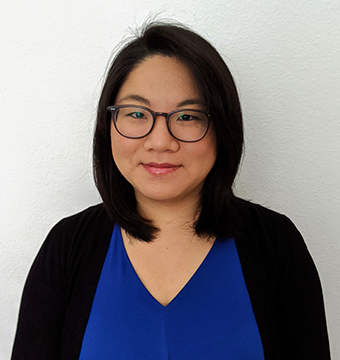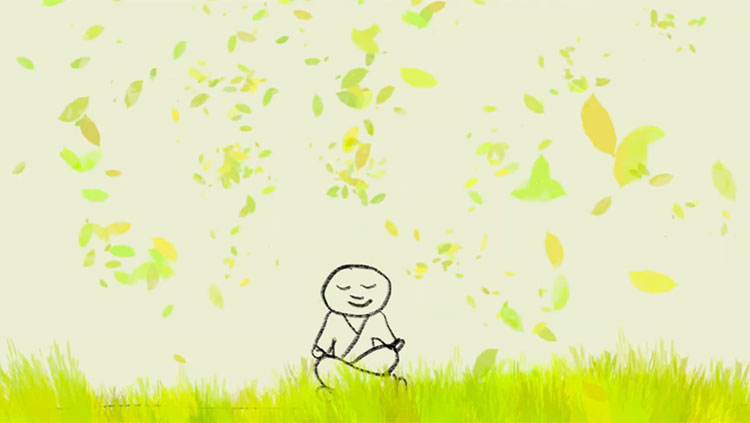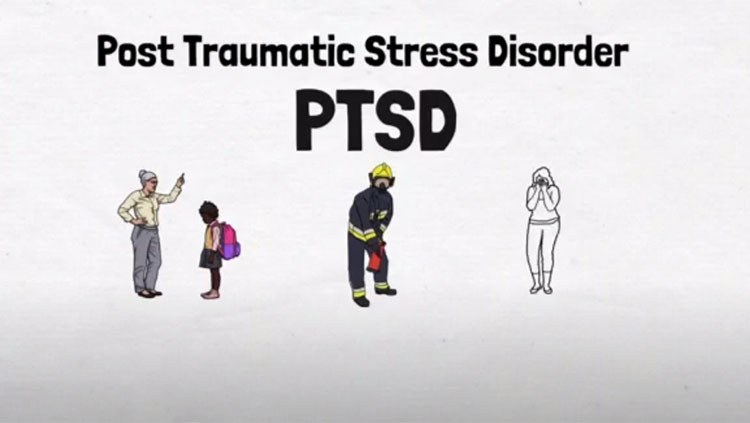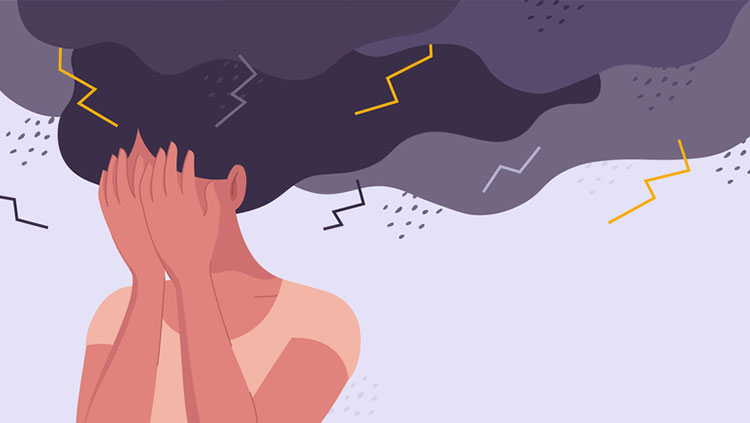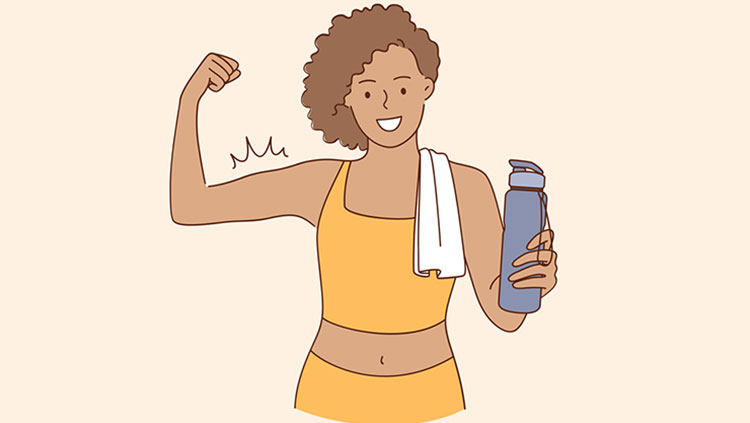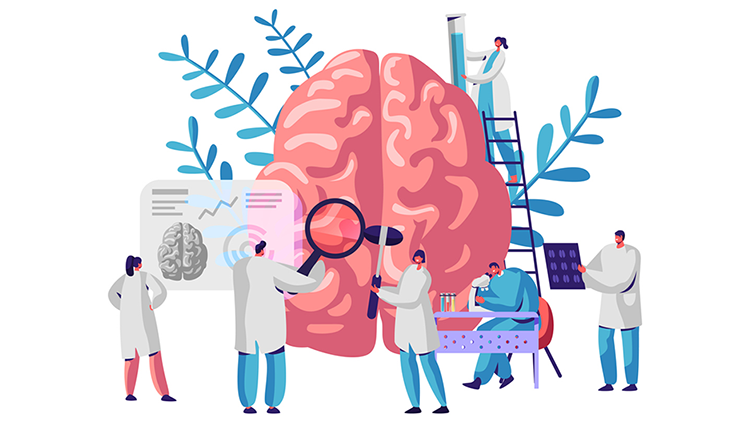Better Therapy for Asian Americans
- Published21 Sep 2023
- Author Diana Kwon
- Source Knowable Magazine

Early in her practice as a clinical psychologist, Janie Hong noticed a troubling trend. With her patients’ permission, Hong had been tracking their progress in therapy — and saw a clear pattern. Compared to her white American patients, her Asian American patients often required much more time to benefit from treatment. While they eventually achieved the end goal of reduced distress, their paths took longer, and often included many more emotional ups and downs, Hong says.
For Hong, now a clinical psychologist at Stanford University, these observations demonstrated a clear disconnect: To those patients, “the interventions that I was prescribing felt so uncomfortable,” she says. Most of the widely used psychological approaches, such as cognitive behavioral therapy (CBT), were developed largely in North American and Western European countries. These treatments, says Hong, are grounded in Western values and often concentrate on the individual’s ability to articulate their internal experiences and on exploring and identifying their true selves. But focusing on your own thoughts and emotions is not the only way to restore mental health, she says, and it may not be the best solution for people with multicultural or minority backgrounds.
The need to address the disconnect is more acute now than ever, after the stress of the pandemic and a recent surge in hate crimes and incidents directed against Asian Americans. One 2020 survey, which included more than 550 Asian Americans, found that almost half of them reported anxiety during the pandemic, and 15% reported depressive symptoms. Six out of 10 reported experiencing discrimination during the pandemic, and this was associated with higher levels of anxiety, depression, and stress.
Similar issues confront other ethnic and racial minority groups, but research shows that Asian Americans continue to be the group least likely to seek help for mental health issues, says Gordon Nagayama Hall, a retired psychologist at the University of Oregon. “And this isn’t because Asian Americans are more healthy than other groups.” Even among Asian Americans with diagnosable mental health problems, only about 25% seek mental health services, compared to around 50% of white Americans, Hall notes.
As they try to understand this gap, researchers have uncovered how differences in values, cultural backgrounds, upbringing, and other factors come into play. Inspired by this work, clinicians are working to create culturally adapted treatments in hopes of better serving this population of 24 million.
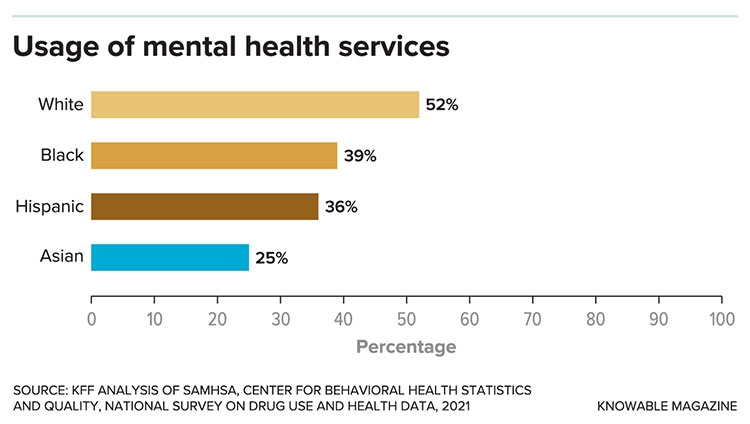
An unmet need
The research effort traces its roots to the 1970s and a growing global movement to raise awareness about the marginalization of people of Asian heritage. By 1970, there were nearly 1.5 million Asian Americans living in the United States — immigrants as well as refugees from many Asian countries — and their population was rapidly on the rise.
Among the pioneers of the nascent field of Asian American psychology were Derald Sue and Stanley Sue, two brothers born in Portland, Oregon, to Chinese immigrants. By the 1970s, the Sues had both become psychologists and were living in the San Francisco Bay Area. There they joined a small group of other Asian American psychologists and mental health professionals who met informally to discuss Asian American issues and to share their own experiences.
The Sue brothers and their colleagues also conducted some of the first investigations establishing the need to better provide mental health services to Asian Americans. Their work revealed that in university and community clinics, Asian Americans were a smaller proportion of patients than would be expected based on their share of the overall population — and that those who did seek treatment tended to do so only for severe mental illness, such as psychosis.
One study of patients across 17 community mental health centers in Seattle, for example, found that 22% of Asian American patients were diagnosed as psychotic, compared to 13% of white American patients. Another, conducted in a clinic in Hawaii, found that while anxiety, depression, and relationship problems were the most common issues in white American patients, delusional behavior, self-destructive acts, and violent behavior were more common among other ethnic groups, which included individuals of Japanese, Chinese, and Filipino heritage.
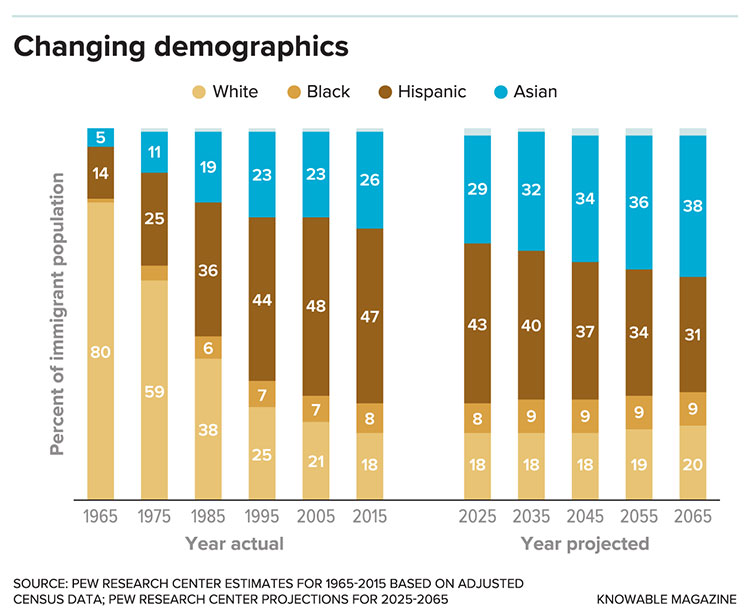
Cultural complexities
Subsequent research has begun to unravel how culture-specific concerns can influence the effectiveness of therapy for Asians and Asian Americans.
One key factor that has emerged is the concept known as face, which refers to a person’s prestige and social standing within a group. Studies have shown that people of Asian descent in the United States and elsewhere tend be more occupied with maintaining face than their white counterparts, and that concerns about loss of face can prevent people from disclosing private thoughts and feelings during therapy. “Oftentimes, because we’re so dominated by Western psychology, we don’t really examine these culturally linked variables,” says Nolan Zane, a clinical psychologist at the University of California, Davis, who was involved in some of this work. Zane coauthored a paper in the 2009 Annual Review of Psychology, with Stanley Sue, Lauren Berger and Hall, on integrating cultural knowledge into psychotherapy.
Face-related concerns may also explain why people with Asian ancestry can find interventions such as cognitive behavior therapy less beneficial, since these interventions emphasize self-disclosure and the individual — and a person’s thoughts, emotions, and behaviors — rather than their relationships to those around them.
Researchers have also been looking at how the experience of immigration or growing up in an immigrant family might affect mental health. Richard Lee, a psychologist at the University of Minnesota, has been interested in psychological acculturation — the change that occurs when people immerse themselves in a new culture. Acculturation can involve learning a new language and new values and practices, as well as dealing with stressful experiences such as racism and discrimination.
Historically, Lee says, acculturation was seen as a one-way process — a path through which a person assimilated into a host culture and shed their native culture. But this largely reflected the experience of white immigrants, he adds. “Over time, you could shed your Irish and Italian ethnicity and get subsumed under whiteness.” Nonwhite immigrants, by contrast, do not get to experience this, leaving them more vulnerable to lasting prejudice and hate.
Researchers today have a more nuanced view of acculturation, Lee says. It’s now seen as a more complex process where a person might become fluent in the language of a new country and learn to work and live within a white community while also maintaining pride in, and closeness to, their heritage culture. And research has found that higher levels of integration into a host culture don’t necessarily mean better mental health.
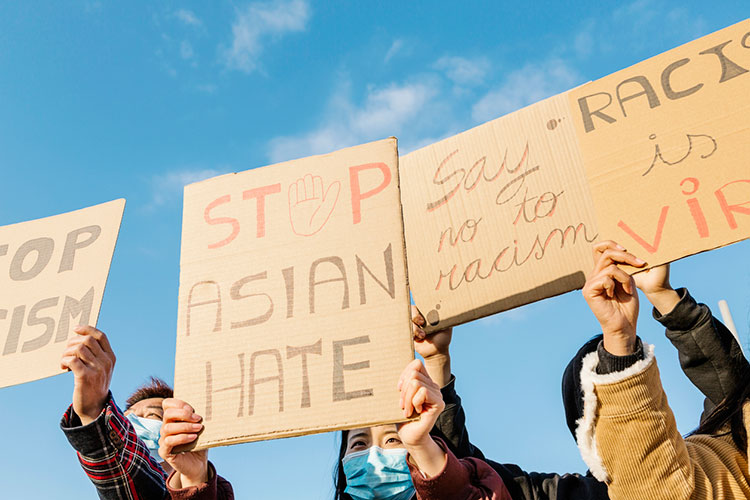
Another way that acculturation can affect mental health involves language brokering, a role often taken by children of immigrants whereby they translate for parents who are not proficient in English. Studies suggest that language brokering is common among children in immigrant families; some estimates suggest that up to 89% of such children take on this role, which can be performed in many settings, including schools, stores, government offices, and hospitals. Assessments in Asian American and Latino families have found that brokering can affect kids’ academic performances and that children who feel positive about their role often end up doing better academically and have better mental health than those who feel burdened.
In recent years, there has also been a growing appreciation of the diverse experiences among and even within the disparate groups that make up the Asian American community, says Linda Juang, a psychologist at the University of Potsdam in Germany who coauthored a 2018 article in the Annual Review of Clinical Psychology on the mental health of children in immigrant families.
Asian Americans in the U.S. have roots in more than 20 countries, with approximately 85% tracing their origins to China, India, the Philippines, Vietnam, Korea, or Japan. In addition to country of origin, people differ by factors such as socioeconomic status, circumstances under which an individual or their family emigrated from their homeland, their destination city, and whether an individual was born abroad or in the U.S. All these factors may have a significant influence on mental health, says Juang.
Researchers are working on understanding how these overlapping factors contribute to psychological well-being. “There’s been a really big push to disaggregate the data,” Juang says.
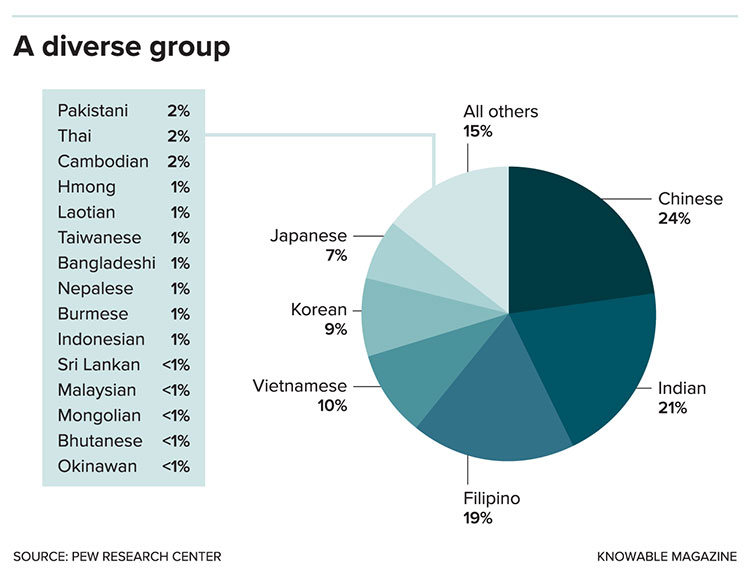
Reimagining therapy
Jacqueline Lee Tilley vividly remembers her first experience with therapy as an adolescent in family counseling. She was struck by how the therapist expected her to speak to her parents as equals. Doing so ran counter to the norms she’d grown up with, where a strict hierarchy was maintained within her community. “I remember feeling that this doesn’t seem quite right,” Tilley recalls.
The unsettled feeling drove Tilley, now a clinical psychologist at Nanyang Technological University in Singapore, to investigate how best to approach mental health interventions for Asian families. Over the years, she and a number of researchers have been investigating how best to adapt existing therapies to meet culture-specific needs.
For example, Wei-Chin Hwang, a clinical psychologist at Claremont McKenna College in California, has developed a modified form of cognitive behavioral therapy. Unlike traditional CBT, which asks individuals to reflect on their thoughts, emotions and behaviors, a culturally adapted version of this therapy for Asian Americans puts a greater emphasis on external problem-solving and goal setting — shifting the focus away from the individual. It also integrates culture-specific metaphors and philosophical teachings, culture-specific ideas on mental illness, and other modifications to tailor the treatment to Asian Americans.
To determine what types of cultural adaptions to include, researchers conducted group discussions with therapists working at mental health clinics focused on serving Asian Americans and interviewed spiritual leaders such as Buddhist monks and Taoist masters and practitioners of traditional Chinese medicine. In a randomized controlled trial of 50 Chinese American adults with severe depression, Hwang and his colleagues found that patients who received the modified CBT experienced a greater reduction in symptoms than those who underwent traditional CBT.
Other researchers, like Hall, have turned to a version of CBT that puts a stronger emphasis on problem-solving, which involves equipping individuals with tools to cope with stressful situations. This, like Hwang’s method, puts the spotlight on external factors — such as relationships or certain life situations — rather than an individual’s thoughts and feelings. Preliminary evidence from Hall and his team suggests that Asian Americans may find this approach, which is known as problem-solving therapy (PST), more personally relevant than traditional CBT.
Doris Chang, a clinical psychologist at New York University, and her colleagues developed Taoist cognitive therapy, which integrates principles of the Eastern philosophy of Taoism, such as an emphasis on collective benefit, noncompetition, and acceptance, into traditional CBT. Providing ways to think about a problem with a Taoist perspective can help patients connect to values and worldviews that are important to them, Chang says. The treatment was adapted from a psychotherapeutic approach initially developed in China. The therapy has yet to be fully evaluated, but Chang and colleagues say they have seen some success in studying Chinese American immigrants with generalized anxiety disorder.
For Hong, a key consideration for effective therapy is moving away from the view that behaviors inconsistent with Western ideas of mental health are pathological. For example, she says, while direct communication is considered crucial in Western contexts, in Asian cultures there’s more subtle nonverbal communication; in a long-term relationship, “it’s almost like this really beautiful choreography and silent dance — they’ve learned to move together and achieve certain goals without having to sit down and have a direct conversation about how they feel.” Understanding and appreciating these types of differences — by realizing that a lack of direct communication may not always be a sign of a relationship problem, for example — is an important way in which therapists can make treatments more effective for a wide range of patients, Hong says.
Figuring out more helpful strategies will be critical. A 2019 meta-analysis by Tilley and psychologist Stanley Huey at the University of Southern California examined 21 randomized trials of culturally adapted interventions versus conventional ones, covering a total of more than 6,300 participants. The duo found — contrary to early beliefs — that some existing mental health treatments did appear to be effective for Asian Americans, but culturally adapting therapies could lead to greater benefits. The key was specificity: Tailoring therapies to Cambodian Americans, for example, such as by framing relaxation techniques as Buddhist-type mindfulness, was associated with the best results.
Ideally, these interventions would be tested with clinical trials, but Hall and others say that obtaining funding for such studies remains a struggle. Hall notes that there has long been a dearth of investment in studies of mental health in the Asian American community. A 2019 study in JAMA Network Open revealed that between 2008 and 2018, only 0.36% of the National Institutes of Health’s budget for clinical research went toward studies involving Asian American, Native Hawaiian and Pacific Islander participants across various disciplines, from cancer to mental health — although these groups make up nearly 8% of the U.S. population.
There’s a huge bias affecting who gets funded and for what kind of research, Chang says. “It can be difficult to make the case that the findings from your research are going to benefit a large proportion of the population,” she adds. “On the other hand, the expectation is that the research done on white populations is automatically going to be useful to people of color, and we know that that’s not true.”
CONTENT PROVIDED BY
Knowable Magazine is an independent journalistic endeavor from Annual Reviews.


